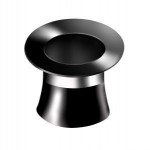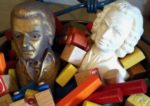Smoke & Mirrors: A Rant
 I love getting unexpected packages in the mail. And by unexpected packages, I mean unsolicited materials and recordings submitted for possible review. It’s like Christmas to tear open the packaging and delve in.
I love getting unexpected packages in the mail. And by unexpected packages, I mean unsolicited materials and recordings submitted for possible review. It’s like Christmas to tear open the packaging and delve in.
Lately though, I’m noticing a disturbing trend in some new recordings that have been sent to me. The producers and recording engineers are having way too much fun. On one recent CD, the dynamic manipulations were so overt, I really couldn’t believe it. I went to our retro stereo system with equalizer and high quality speakers to have another listen. The manipulation became even more obvious—mere smoke and mirrors.
Do these producers think we are stupid? Is it possible that the initial recordings are so faulty that they required all this sliding of sliders and turning of knobs? Perhaps the studios chosen to produce these recordings don’t specialize in acoustic instruments?
I do have to say that mostly, these are smaller labels and/or are self produced. That begs the question of why an artist would allow their work (and their listeners) to be tortured this way. To me it’s better to be admired (or not) for who you are than for falsely trying to make yourself into someone else entirely.
Call it enhancing, doctoring, or whatever you will, this kind of tampering is at best a distortion and at worst a misrepresentation of an artist and their unique temperament.
Bruce Brubaker recently wrote a post entitled Labor Management. In it, he touched on the enhancements that were done to Rubinstein’s recordings by his longtime producer Max Wilcox.
Mr. Wilcox is known as a producer with musical opinions. The fine craft of the editing in this nocturne recording makes it clear how closely he and his engineers were listening. How strongly Wilcox may have expressed himself to Rubinstein, and even influenced the pianist’s way of playing, I don’t know. Nor do I know if Rubinstein was aware that nuances were being trimmed from recordings of his playing. With the removing of hand-breaks, small bits of time, milliseconds were removed — altering overall musical rhythm.
Bruce brings up the question of whether perhaps Rubinstein wanted to play differently in recordings (play-acting vs. film-acting). He used words like, modernized, manicured and sanitized.
To all you pianists and recording engineers out there: Being an artist is about truth. We teachers do not want our students to think that such recordings are in any way kosher—heaven forbid that they should serve as models for achievement. We listeners can hear when you cross the line from making enhancements to the dark side—to playing with our affections.
And, just so you know, we all generally resent it. Hence the rant.



I agree! The thing is that most of the hoodwinking going on was totally unsuccessful and not conducive at all to wanting to hear the performer live.
I looked up some information on Glenn Gould before I wrote this post. From what I could find, Andrew Kasdin did what he could to minimize the singing/humming while not compromising the sound. Here is a link to his book: http://www.amazon.com/Glenn-Gould-Work-Creative-Lying/dp/052524817X
Interesting post, Gail, and I have noticed a similar trend in some of the recordings I have been sent to review for my site. It bothers me for the same reasons you cite, but also because such manipulation can give the listener a false sense of what the music and performer really sound like, and when they go to hear the same performer in the same repertoire in a live concert may come away feeling somehow cheated or hoodwinked. I often overhear people at concerts say “it wasn’t like his/her CD” and I want to shake them and say “it’s not meant to be! This is live music!!”
Interestingly, last week I was listening to a YouTube video of a studio recording of the great Glenn Gould playing the Bach Goldberg Variations – it’s got all of his humming and everything. One of the comments was by a recording engineer complaining about the sound quality, it was recorded on tape and there is some tape “flutter”, an artefact that is best described by it’s name. I didn’t hear it at first as I was lost in his playing and even when I knew of it, I couldn’t help be distracted from it by his genius and total immersion in his playing. It’s a lovely thing to see in a different context to a concert hall, i.e the studio, with cameras moving around him.
Thanks for the engineer’s POV. Perhaps some of these were amateur recordings but certainly not all amateur pianists.
As a pianist and recording engineer I can tell you that there has been tampering in the form of compression which if used incorrectly can destroy dynamics and subtlety. A raft of products have come on the market and are available to home recordists that encourage the engineer to use presets and come under the banner of “mastering tools”. This final step in the recording process is meant to iron out defects that can damage certain equipment and the old style of mastering engineer would have used specialised high end equipment to ensure the recording went to print being able to be played on as many different systems as exist without fear of distortion. To downgrade this very specialist step with a preset filled plugin gives temptation to trusting the software and not your ears.
It’s bad enough that radio and tv stations impose their own processing on top of all that which means you can hardly ever have full artistic control over what is being heard. NOTE TO AMATEUR RECORDING PEOPLE. USE YOUR EARS AND WATCH THE METERS. Don’t rely on presets. EVER.